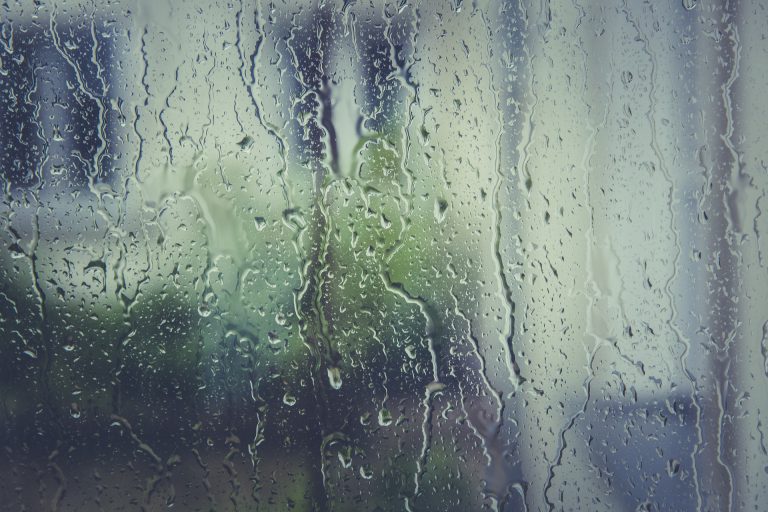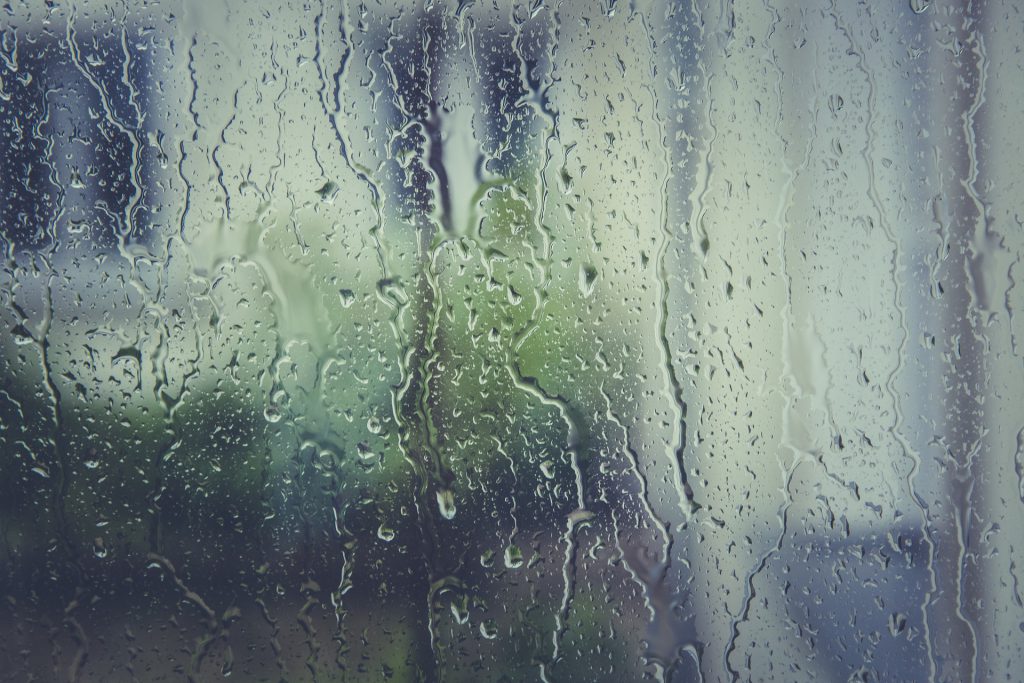
Nearly every RV owner deals with condensation at one time or another. Not only is RV condensation super annoying, it can actually lead to some serious problems. In this article we will discuss the issues that can be caused by condensation in your RV, what causes condensation, and how to go about getting rid of all that extra moisture.

The Problem with RV Condensation
Wondering what kind of damage condensation might cause to your tiny home-on-wheels? Well, it’s a lot more than you might think.
As you probably already know, water damage is not something you want to deal with in your motorhome or travel trailer. Unfortunately, not all water damage comes from leaks. Some of it is caused by condensation.
As this extra moisture collects on windows and walls, it will start to drip. Without anywhere to go, this water finds its way into nooks and crannies or gets stuck between objects and the wall. This, in turn, leads to mildew, mold, and even rot.
Condensation on Windows and Walls inside the RV
Obviously, mildew, mold, and rot are not things you want to have in your RV. Therefore, it is imperative that you find a way to prevent condensation.
Generally speaking, you will likely find this condensation inside windows of your RV. However, it can occasionally form even on the walls in your motorhome or trailer. In both cases, the condensation forms when the moisture in the air cools down to a liquid, which then sticks to cold surfaces.
Knowing this, you can probably guess that the best way to get rid of condensation is by getting rid of excess moisture in your RV. Here are our best tips for doing just that:
- Invest in a dehumidifier and run it religiously. This will pull moisture from the air for you, allowing you to dump the water outside or down the drain.
- Place DampRid in every cabinet and closet to prevent moisture buildup from happening inside these small enclosed spaces.
- Avoid running the propane furnace, stovetop, and oven if at all possible. Burning propane releases moisture into the air. Instead, use ceramic electric space heaters, an electric cooktop, and an Instant Pot or NuWave Oven.
- When you do cook, consider taking it outdoors—or at least covering your pots and pans to keep the steam contained.
- Run a vent fan while showering in order to let steam escape outside.
- Crack a window. In some cases, cracking a window and allowing the dry outside air to mix with the more humid indoor air is helpful.
Condensation on Outside of Windows
Occasionally, you may notice condensation forming on the outside of your RV windows. This usually happens when the interior of your rig is very cold from running the A/C while the outdoor air is hot and humid. Fortunately, moisture on windows on the exterior of your RV is not nearly so concerning as interior condensation, as it doesn’t tend to lead to issues as long as your windows are well sealed.
That said, this moisture buildup can be annoying. This is especially true if you have a motorhome and find yourself ridding the indoors of water in order to drive. It can also be a pain if the water drips and causes streaks down the side of your RV. For these reasons, you may be looking for ways to prevent condensation on windows outside.
Here are our tips for doing so:
- Use RainX on your windows. Sure, this is made for rain on cars, but it works just as well for condensation on RV windows.
- Turn up the temperature. Turning the thermostat up by a few degrees may not feel all that different to you, but it could be just the thing for getting rid of that exterior condensation.
Following these simple tips should help you get rid of damage causing any unsightly condensation. This is great because it means you can focus less on this annoying problem and more on having fun camping with your family and friends.






